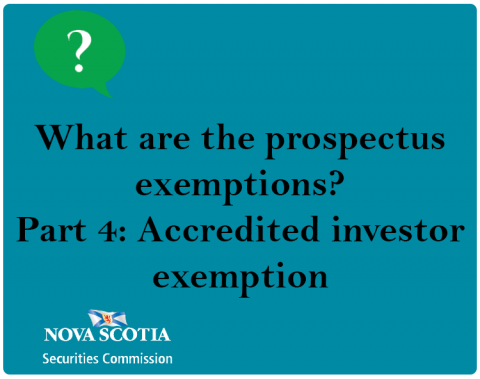Submitted by nsscadmin on

We’re crossing the midpoint of our blog series on the prospectus exemptions. This week we’re looking at the accredited investor exemption.
An issuer can sell securities to anyone who meets the legal definition of an accredited investor without providing disclosure documents. These is no limit on the amount of money an issuer can raise through the accredited investor exemption. There are several persons and institutions that can be designated accredited investors. They include, but are not limited to:
- Financial institutions
- Registered investment advisers of dealer
- Pension funds
- Corporations, limited partnerships, trusts or estates with assets valued over $5 million
- Individuals with more than $1 million in financial assets, excluding real estate
- Individuals with a net income, before taxes, that exceeds $200,000 in each of the two most recent years and reasonably expects that net income to continue in the current year.
- Individuals with at least $5 million in net assets.
Anyone who qualifies as an accredited investor as an individual must also sign a risk acknowledgement, Form 45-106F9 - Form for Individual Accredited Investors. By signing the form, the investor acknowledges the risk they are taking on with the investment and confirm how they qualify as an accredited investor.
Issuers who rely on the accredited investor exemptions should conduct the proper background checks to ensure their investors meet the accredited investor definition.
You should consult with legal counsel familiar with securities laws if you have any questions about the prospectus exemptions and how to comply with the requirements to rely on the prospectus exemption.
